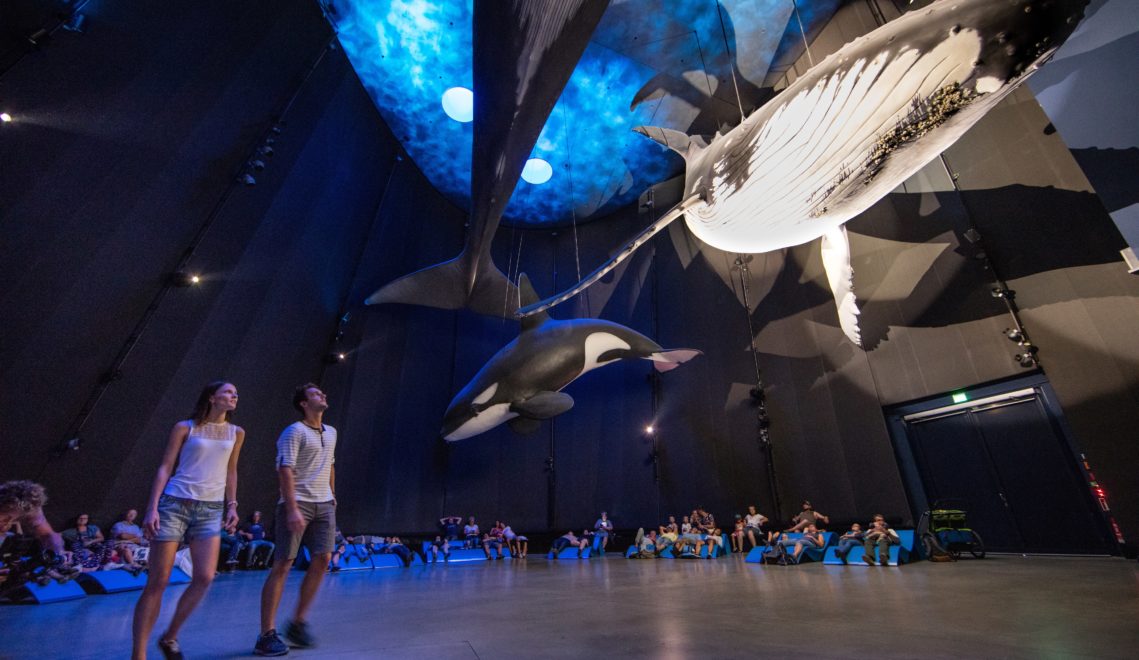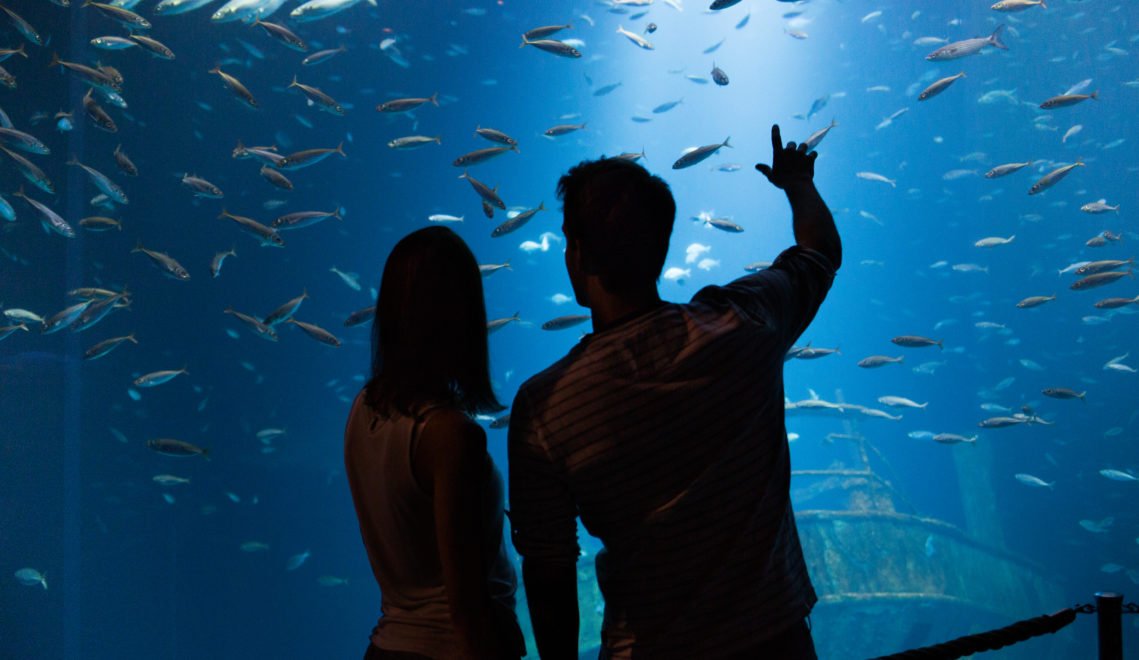The award-winning Ozeaneum, spectacularly embedded in the harbor skyline of Stralsund, takes its more than 500,000 annual visitors on an adventurous journey into the hidden depths of the North and Baltic Seas.
A highly emotional moment comes for us right at the beginning of our visit: the huge heart of the fin whale, exhibited at the beginning of the tour, moves us all heavily. We imagine how it beats, pumps and works in the chest of its mighty owner, somewhere in the depths of a world sea - and how tiny the human heart placed right next to it seems in comparison. Later, in the exhibition "1:1 Giants of the Seas", we will hear humpback whales and their beguiling songs, with which they can communicate over many kilometers in the water, in a multimedia show. And we will marvel at original-sized replicas of the sea giants, including a 26-meter-long blue whale. At the latest in this last exhibition, the giants of the seas have conquered our hearts.

We discovered so many exciting and beautiful things during this varied day in the extraordinary rooms and floors of the Ozeaneum - but perhaps that is the greatest achievement of a visit here: a strengthened understanding of the diversity, preciousness and fragility of life in the sea; and how important it is to work for the preservation of this incredible treasure of species. In essence, the museum is designed as an underwater journey through the northern seas. The tour is designed so that visitors first get to know the Baltic Sea habitat - from Bodden waters to seagrass meadows to the chalk coast. The show rooms for the North Sea are laid out in a similar way, starting with the Wadden Sea, continuing with an unusual tunnel aquarium for the island of Helgoland and Scottish coastal caves, and ending with the open Atlantic. We can also take a look at strangely shaped creatures of the deep sea - from that distant world about which we still know very little and understand even less.

And these are just a few highlights of countless others in this aesthetically unique building. With its four white-cut building sections made of ship steel, each with its own individual shape reminiscent of stones washed by the water, it is an absolute eye-catcher in the picturesque harbor setting of Stralsund. It is hard to imagine a more worthy building to receive the "Europe's Museum of the Year" award after a visit. In 2010, this magnificent building, opened two years earlier by Chancellor Merkel, received this recognition.

Yes, Stralsund can be justifiably proud of the German Maritime Museum, which is spread over four locations in the city and region. In Stralsund, behind the walls of the monastery, there is also the Oceanographic Museum, which focuses on tropical seas. It has been located in Stralsund's old town since 1951 and will be closed in 2021 for renovation and modernization work. Then there is the Nautineum on the small island of Dänholm just outside the city, with numerous original exhibits on fishing and marine research. In the Natureum at Darßer Ort, Baltic Sea aquariums are combined with exhibitions on the Darßer Ort habitat, the Baltic Sea coast and the animals of the region. The lighthouse is also located on the museum grounds, the ascent of its 126 steps is worthwhile and offers a beautiful view over the Baltic Sea and the national park "Vorpommersche Boddenlandschaft" at the finish. And the Ozeaneum is the newest and largest location and the highlight of this chain of museums - with more than half a million visitors every year.

The entrance to the foyer, where the giant skeletons of fin and sperm whales cannot be overlooked, already impressively marks the transition to other worlds. The fact that a separate audio guide is available for children (with Jaques, the diver) increases the knowledge fun immensely. Children will especially enjoy the impressive penguin enclosure on the roof terrace with a view over Stralsund's old town and the more than 50 aquariums. The largest tank, with a panoramic pane measuring more than 50 square meters, gives the impression that you are really diving into the wild, unknown seawater yourself: rays and sharks can be seen, shimmering schools of fish swim close to us.

We leave the Ozeaneum exhausted and happy after long and at the same time far too short hours. As Dr. Harald Benke, Director of the German Oceanographic Museum, told us at the end of the audio guide tour: "Not everything here can be explored in one day, so please come again! A request we will definitely follow.
Cover photo: The tunnel aquarium "Helgoland" in the OZEANEUM Stralsund holds 200 000 liters of water © TMV/Krauss